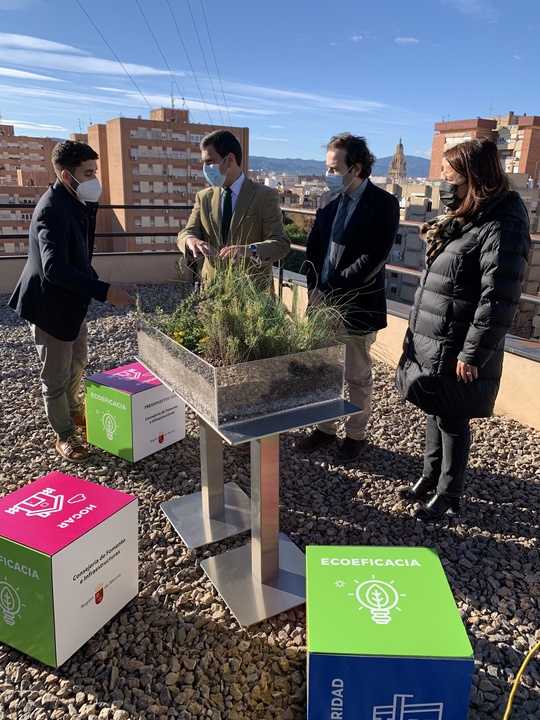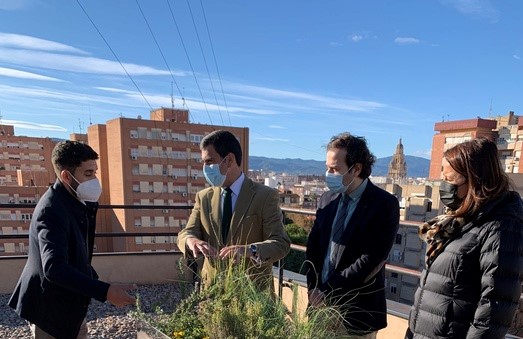The Autonomous Region encourages living roofs on buildings to renaturalise urban spaces
04/12/2020
Díez de Revenga presents a plan to turn the roofs of buildings into "green lungs" for the city
They are looking into installing this innovative measure on 23 of the regional administration's buildings
The regional government is encouraging the installation of living roofs on public buildings belonging to the Autonomous Region to renaturalise urban spaces and tackle the effects of climate change, through the "Regional Living Roofs Plan".
The Regional Minister for Development and Infrastructures, José Ramón Díez de Revenga, presented this initiative today, which is part of the Sustainable Construction and Architecture Strategy of the Region of Murcia, developed by the regional government in line with the Sustainable Development Goals (SDGs) of the United Nations and the European Urban Agenda 2030.
Díez de Revenga emphasised that "the installation of living roofs on buildings will allow the roofs to be turned into 'green lungs' for cities, to increase biodiversity, reduce carbon emissions and the risk of flooding, reduce the local temperature, encourage energy saving and optimise thermal and sound insulation".
The minister stated that living roofs "are an innovative measure that connects us to nature, provides environmental benefits and improves the health of people in urban environments". Among their advantages are a reduction in the temperature of the building in summer of up to eight degrees, resulting in a significant energy saving, and a 40% reduction in runoff water from torrential rain.
Furthermore, they absorb a tonne of carbon in total per square metre of green roof over the course of a year, using native herbaceous plants and an extensive system and, in turn, they increase biodiversity.
23 public buildings
The regional government is conducting a study into the Autonomous Region's building stock, specifically 23 administrative buildings, to identify the construction and volume characteristics of the buildings and argue for their suitability for installing living roofs.
Once the conditions of the building have been assessed, the improvement options will be determined, and the most suitable methodology will be drawn up for each building for transforming the roofs into green roofs.
There is a wide variety of living roofs, which aim to adapt best to the conditions of the buildings. These include extensive roofs with mostly native plants and vegetation; intensive or garden-type roofs which can contain anything from lawn to trees combined with pedestrian accesses or other services; semi-extensive or semi-intensive; roofs with a tank to retain water and urban vegetable gardens.
Statements: Regional Minister for Development and Infrastructures, José Ramón Díez de Revenga, on the Living Roofs Plan that will be carried out by the Autonomous Region as part of the Sustainable Construction and Architecture Strategy for the Region of Murcia
(MP3 file 1 906.0KB) (MP3 file 2 541.5KB)

Photograph: Presentation of the Living Roofs Plan
